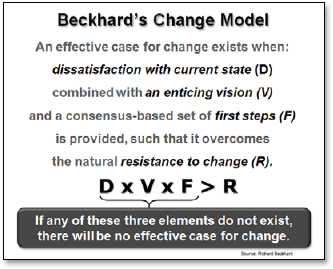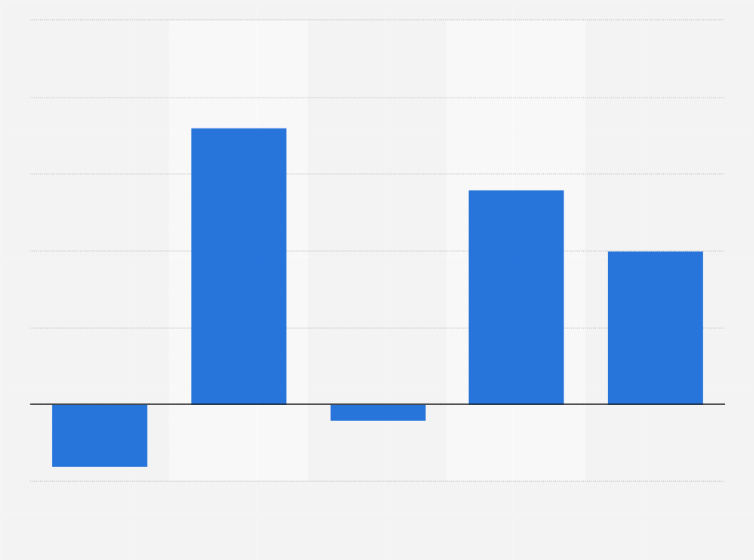Contents:


The risk-based haircut methodology combines aspects ofoptions pricing theory and portfolio theory to compute capital charges. This framework adheres to regulations set forth by the Securities and Exchange Commission net capital rule under the Securities Exchange Act of 1934. The only securities that consistently escape a haircut are US government bonds because they are considered free of default risk.
Taking the example above, an asset worth €1 million at fair market price, but given a 20% haircut, would only be sufficient to receive a loan of €0.8 million. While a 50% haircut is standard for margin accounts, a risk-based haircut can be increased if the deposited securities pose liquidity or volatility risks. For example, the haircut on a portfolio of leveraged exchange-traded funds , which are highly volatile, may be as high as 90%. Penny stocks, which pose potential price, volatility, and liquidity risks, typically cannot be used as collateral in margin accounts.
Technological advancement and more efficient markets have caused a decrease in several asset spreads to haircut levels. It is more expensive for retail traders to transact at the same spreads as market makers. This renders transactions with spreads at haircut levels for retail traders unprofitable. This 50% or $7500 reduction in the stock portfolio’s value used as collateral is referred to as the haircut. After the exchange’s haircut, the client will receive margin against the stocks. The haircut is the percentage amount used to cover the risk of stock price fluctuations.
Browse the financial glossary in alpabetical order
For example, when an investor uses securities as collateral on a loan, the lender will usually devalue the securities by a certain amount to provide a cushion in case the market value of the securities falls. This amount may be greater if the securities the investor seeks to use as collateral are considered risky by the lender. If a lender determines there’s a high risk of loaning to the borrower, they might increase the haircut amount compared to an asset or loan that has lower risk. When a lender devalues an asset, they increase their protection in case the market value drops. If a lender ever needs to sell an asset because the borrower defaults, they calculate how much they can reasonably expect in a sale.
The failure of LTCM, which required a bailout of the financial system, resulted in much higher haircut rules in terms of what can be posted as collateral, and how much the haircut has to be. LTCM had basically no haircuts, yet today an average investor buying regular stocks is subject to a 50% haircut when using those stocks as collateral against the amount borrowed on a margin trading account. A haircut can also be used to refer to the difference between the buying and selling price of a stock, bond or derivative contract or any other financial instrument. In this sense, the term haircut is used to express the market maker’s spread. This decreases the chance of a poorly timed margin call or the forced sale of a security at a lower price. The amount of the haircut reflects the perceived risk of loss from the asset falling in value or being sold in a fire sale.
Alternatively, margin is often stated as the collateral ratio or percentage of the purchase price. A haircut also refers to the sliver or haircut-like spreads market makers can create or have access to. The size of the haircut is largely based on the risk of the underlying asset. Suppose an investor owns a zero-coupon bond with a face value of $1000 and for some reason, the issuer agrees later to repay only $400.
- For example, when an investor uses securities as collateral on a loan, the lender will usually devalue the securities by a certain amount to provide a cushion in case the market value of the securities falls.
- You may also see the phrase “ to take a haircut,” which means to take a loss on an investment.
- Haircut value is the lower-than-market valuation placed on an asset when the asset is being used as collateral for a loan.
- When an investor borrows a margin loan, the broker puts a value on the securities used as collateral.
- When a lender devalues an asset, they increase their protection in case the market value drops.
Fs and ft are the haircut floors for the securities that are net lent and net borrowed respectively. 2 For the purposes of this calculation, collateral that is called by either counterparty can be treated collateral received from the moment that it is called . You need to login in to your stock broker account and request for unpledging of the stocks. You can do it yourself as well if your broker provides the unpledge button against the stocks which are pledged. In the aftermath of the Satyam scam in 2009, India’s securities market regulator, Sebi, has created requirements on mandatory declaration of these borrowings.
Frequently Asked Questions About What is Haircut in Share Market?
Customers who have pledged shares and have paid back the loan amount or cleared their ledger debits and related dues can unpledge their stocks from the lenders. Following the un pledging of securities, they can be transferred, and the lender’s rights to the pledge will be terminated. To summarize, any security with a higher level of volatility and price unpredictability will naturally have higher haircuts when used as collateral. In both the Indian and global contexts, the haircut for stocks is typically 50%. The sole risk is that interest rates will rise, resulting in a high collateral value and a low haircut. This is not the case with equity markets, which are extremely volatile, resulting in excessive haircuts.
It allows investors to leverage and participate in transactions without assuming a significant risk. Haircuts are constantly evolving, and they are influenced by changes in the nature of the investment. If frontline shares become too risky, for instance, the bank or lender may unilaterally raise the haircut on these securities to safeguard the lender’s investment. A haircut is the percentage difference between what an asset is worth relative to how much a lender will recognize of that value as collateral. The primary determinants that impact the haircut amount are the default risk of the borrower and the various aspects that may lead to a drop in the value of the collateral.
haircut
The riskier an asset is, the higher the applied haircut will be.Haircut is commonly used in many financial operations where collateral is being used, like for example securities lending. A lender needs to assess the ability and the value that they can recover the loan if the borrower defaults on it. If a lender feels that they can sell the collateral for its market value without any issue, the haircut will be low. On the other hand, if they foresee difficulty in selling the collateral and particularly at its face value, the higher the haircut will be. In financial markets, a haircut refers to a reduction applied to the value of an asset. For example, if an asset – such as holdings of a particular government bond – is worth €1 million but is given a haircut of 20%, it means it is treated as though it has a value of only €0.8 million.
Morning Bid: Banks rescued, rates recoil, stress builds – Reuters
Morning Bid: Banks rescued, rates recoil, stress builds.
Posted: Mon, 13 Mar 2023 07:00:00 GMT [source]
The term is believed to have been coined because it allows market makers to trade at a thin spread. In the context of exchange traded products then the term can be used interchangeably with “margin”. A general rule of thumb is that the lower the haircut is the safer the loan is, and the higher the haircut is the riskier the loan is. Rehypothecation is when financial firms use client assets as collateral. Screaming women with identikit haircuts whoop her every flex and step.
Her Teaching and research interests include Management subjects, financial management, microfinance and social entrepreneurship. She has 10+ years’ experience of working with Deloitte, Royal Bank of Scotland and SCNL. The video below explainsthe term’s meaning when referring to creditors getting back much less than they are owed. A lower haircut also allows for more leverage and plays an important role in trading. Equity typically refers to shareholders’ equity, which represents the residual value to shareholders after debts and liabilities have been settled. Haircut and margin both refer to the same concept of an asset’s value being arbitrarily reduced for risk mitigation, though they are expressed differently.
Not the answer you’re looking for? Browse other questions tagged investingterminology.
Cory is an expert on stock, forex and futures price action trading strategies. Weddings, parties, listening to music, picnics, and haircuts are commonplace. Strategies to erode identities include forcing individuals to surrender all personal possessions, get uniform haircuts and wear standardized clothing. He has several missing teeth, blond hair, of which the length differs due to occasional haircuts. The release marked a change in musical direction for the band and a new image with band members receiving haircuts. Bad haircuts and glasses may be used for the before version while the after version has the computer generated images smiling and wearing a suit.
Haircut does not mean shaving off welfarism Print Edition – The … – The Sunday Times Sri Lanka
Haircut does not mean shaving off welfarism Print Edition – The ….
Posted: Sun, 21 Aug 2022 07:00:00 GMT [source]
When financial institutions borrow from one another, they can use other loans or assets as collateral to borrow, too. The lender needs to consider the amount of risk he would face in the event of not being able to sell the asset for a sufficient amount of money in case of default by the borrower. Risk-based haircuts reduce the recognized value of an asset below its current market value to help protect investors from having to cover a margin call.
What is a Haircut?
This chapter sets out the minimum haircut floors for securities financing transactions and the treatment of portfolios that breach the floors. When you employ pledges, your risk exposure is restricted to the stocks you used as leverage. If you are unable to repay the margin, the stockbroker will liquidate the securities in your margin account to satisfy the loan. The stocks or monies in the margin account are held in trust by the stock broker.
Forex haircut meaning in finances that provide raw spreads to their clients charge a commission on each trade. They make their money off of trading fees instead of marking up the spread. In many markets, the market maker’s spread is the same as the retail trader’s spread, although the trading costs for the retail trader make trying to profit from a haircut spread ineffective. By 1998 it had amassed massive losses, nearly resulting in a collapse of the financial system. The basis of LTCM’s profit model, which worked very well for a while, was to suck up small profits from market inefficiencies. The firm used historical models to highlight opportunities and then deployed capital to profit from them.
To maintain the value of collateral held by the buyer in a transaction equal to the value of the cash held by the seller, adjusted for any haircut requirement. Required by the holder of collateral in a repo, buy/sell-back or securities lending transaction, to protect against the possibility of a fall in the collateral’s price. In-scope SFTs which do not meet the haircut floors must be treated as unsecured loans to the counterparties. To obtain a loan, a promoter’s interest in a firm is utilised as collateral. Nevertheless, as the value of the stock fluctuates, so does the value of the collateral.

A haircut of 5% would mean for example that, for collateral with a market value of 10 million euros, the borrower can receive a loan of 9.5 million euros. Broker XYZ assesses the risk of these securities and determines that they should have a risk-based haircut of 10% to take into consideration the risk that the securities will devalue. The value of the securities is therefore $9 million as margin into the fund’s account, meaning they will have to still post an additional $1 million to meet the $10-million requirement. Projected prices are calculated by the closing price of the underlying asset each day plus or minus price moves from 10 equidistant data points from an extended period. The largest projected loss for the entire class or group of eligible products is the required capital charge for the portfolio.
- The extent of the haircut is mostly determined by the actual asset’s risk.
- The 10% difference in price is the haircut, which is the fee market makers charge to offset risk.
- Since market makers can transact with razor-thin spreads and low transaction costs they can take small slivers or haircuts of profits constantly throughout the day.
- A risk-based haircut reduces the recognized value of an asset to determine an acceptable level of margin or financial leverage when an investor buys or continues to own the asset.
In order to protect themselves from price unpredictability and related risks, lenders apply a percentage reduction to the value of the asset used as collateral for the loan called a haircut. Financial institutions calculate the price at which a collateral asset can be sold in case the borrower defaults on their obligations and assign that value to the asset. Different assets are treated differently so lenders must consider the collateral as an isolated case to evaluate the risks involved such as volatility, price predictability and liquidity. When an investor borrows a margin loan, the broker puts a value on the securities used as collateral.
Keep an eye out if you ever need to borrow on margin from a brokerage firm. When you borrow a margin loan, your broker will put a value on the securities used as collateral for that loan. The larger the haircut, the lower the value of those securities you put up as collateral. This gives the brokerage a larger cushion in case the market price of the securities decreases. Investors seeking to access loans from brokerage firms to increase their portfolio holdings also face haircuts.
In finance a haircut is the percentage of an asset used as collateral that is deducted from its market value. Haircut value is the lower-than-market valuation placed on an asset when the asset is being used as collateral for a loan. The haircut value is externally determined, and the asset holder often does not have a say in the determination of the haircut value. In the fall of 2018, 14 banks and brokerage firms invested $3.6 billion in LTCM to prevent the imminent collapse of the hedge fund.